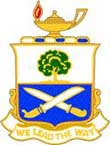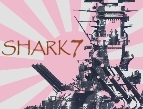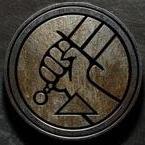rtrapasso
Posts: 22653
Joined: 9/3/2002
Status: offline

|
Here are some interesting comments about "why" the fire control system had design flaws - there is passing references to the overly complex and delicate systems (this is from http://www.navweaps.com/index_tech/tech-044.htm):
"OK. WWI is lost. The RMA is disbanded. The Versailles Treaty is signed and the fleet scuttled. The RMA-personnel reduced by 80% of the original number and with the possibility of additional reductions in the future. The Weimar Republic is born.
The new politicians of the Weimar Republic never want war again. So, they do not spend any more money on the military than is absolutely necessary. Great reductions in the active fleet are mandated by the Versailles Treaty, putting many officers at loose ends. There are now more active officers than jobs. During this phase of reorganization in the entire military structure, the design groups and the fleet personnel are merged to some extent. So, new positions for the former ship-officers are created inside the RMA, which is now renamed Marineamt (MA). This means that the inner workings of the design team are now populated with front-line officers.
After 1933 the number of the (now) MA staff grew rapid and constant. But as we discussed earlier, front-line officers in command. Most of the new, fresh, young and inexperienced designers never saw a warship from the inside. All they had to have is a Master's Degree in engineering. The design work was more and more fragmented, with two or more groups working on the same problem. So they had "design parties" led by technically inexperienced front-line officers, young ambitious designers without onboard-experience and finally design-questions ripped from the overall context.
The outer environment is now changed as well. The Versailles treaty knocked the German navy down to that of a 3rd or 4th rate nation. If you don't want to play this role, but you are saddled by the treaty, then you have to invent something new and upgrade the old things to become the new cutting edge. You cannot just follow what the other nations do – there's no money, no political support and the dictate of Versailles prohibits much of what was formerly done. You must create things that are better than what other navies have. This mindset leads to such things as the comparatively high performance 11" gun, the diesel powered Panzerschiffes and the all-welded hull designs. But the bad news is that the overall design-process is turned upside-down. Now, things look like this:
a) No political overview. The dictate was that: "The Fleet must be ready for combat within 8 years." But for the questions of: "For what? Against whom? For how long? Strategy and Tactics?" there are no answers. This results in an absence of political guidance for the MA, thus the directors are free to follow their own ideas.
b) No technical concepts that need to be followed. The major ships were ALL just prototypes. Some good, some bad, none outstanding. Why? We will return to this a little later.
c) The atmosphere inside the MA is poisoned. Ex-military men, with no design experience, are now in charge. No longer was the RMA (now MA) mainly a department of uniformed civilians. It had now morphed into a barracks square, with the iron discipline that implies. You need time-in-rank to get to the next level of command, not technical experience.
d) Starting perhaps as early as 1933, but absolutely after the signing the 1936 London treaty, the engineers were under constant and growing pressure to deliver RESULTS.
What were the effects of this upheaval?
1. Design team leaders who are not able to decide between good and bad ideas, ones who cannot provide guidance in technical questions.
2. Teams whose junior members are not aware of "how a warship must perform," with no ideas about what is really important and what is a trivial concern.
3. Rivalry between the teams, overestimating their individual importance in the design process.
4. Inventions just for having inventions with no one asking if about if they are useful or not.
For example, think of how you would behave in this situation. If you are forced to something quick, would you also combine it with some totally new techniques or designs? Most likely, the answer would be no. You would most likely do it the same way you have done things in the past because you are familiar and comfortable with those "tried and true" concepts. Likewise, the German designers. They were forced to produce instant results by the "seagoing branch" inside the MA. And the MA too often demanded the impossible. Unlike during Adm. Tirpitz's time in command, the MA did not care much about what potential opponents were doing. The concept was, "didn't we prove with the Panzerschiffe that we are capable of producing the impossible?" So, the leaders of the MA continued to ask for the impossible. See the Cruiser "P" design concepts. This combination of demands was horrible for the designers. The solutions of the design teams leaned on the "conservative, iron rules" of IM design (because they must deliver quick results) in combination with some welding and power plants of higher performance. But the end result was that these demands conflicted to such an extent that the ships cannot be built.
One can clearly see the influence of the "fleet" in the designs of Hipper, the Scharnhorst and the Bismarck classes of warships. Although the Battle of Jutland proved that the shooting of German ships was quite adequate, the lack of a coordinated, centralized fire-control such as the British had was well known by the "fleet" after this sortie. Result: The Fleet wanted the a Fire Control System that would be the best, the utmost, the totally superior Fire Control System. So, the MA spent a great deal of time and resources into developing such a system. The end result was an overly complex, very heavy Firing director and very sensitive machinery. This development process continued until the point of chaos was reached. For example, the new battleships Scharnhorst and Gneisenau were found to be incapable of shooting their main guns in the autumn 1939. This could only be corrected after 22,000 yards (!) of useless electrical wires were removed and major modifications were made to the Fire Control circuits and mechanisms.
A second example would be the anti-aircraft FCS on the Bismarck. The company that built the computers for this proudly announced that only a dozen of their 20,000 employees were capable of assembling this machine. When you think about this, there is really no better way to express the fact that this inherently means that the computer won't work properly in actual service. All in all, they (the fleet branch) wanted every thing PERRRRFECCCCT. But if you do it, you often are 10 years too late. The DP-gun wasn't produced because the fleet branch wanted them stabilized in three dimensions – why not start with a 2-d stabilized version and see how it works? The Scharnhorst and Gneisenau were outfitted with every gun and FC gimmick (useful or not) that was available. Result: An overloaded design. A few tons more and the main armor belt would loose its function as it would wind up below the waterline. Likewise, the upperworks of the superstructures were the favorite playground of every ambitious technical naval officer who was in command in the MA – I'm sure you noticed the different deck layout for each of these two ships. This is the reason for it. Remember – not technical qualification, but rank is required for all decisions.
At the battle off the Norwegian coast, did the Scharnhorst and Gneisenau perform well? The answer is no.
The situation facing the Scharnhorst and Gneisenau was nearly textbook. In theory, this sortie should have turned out to be a "piece of cake," a clear victory within a couple of minutes. Look at the conditions:
- Good visibility
- Normal sea conditions for that region
- 18 large caliber guns vs. 6 on the Renown
- Distance to opponent about 150 hm (16,400 yards), perfect for main guns and secondaries.
- The German shells could easily defeat the Renown's armor at this range.
- A chance for "crossing the T."
Instead of that, the Scharnhorst and Gneisenau bugged out, showing good shooting only in the first few minutes of the engagement. Everything after changing course to 70° was a slow, but constant waste of ammo. The longer the battle lasted, the worst became the shooting.
I don't want to pick on the ships commanders or say they should have done things differently. I think they did not have much of a choice - due to the bad seagoing abilities of their ships in combination with extra-sensitive guns and overly-complex FC. Where did these deficiencies come from? From overloading the ships and poor performance by the equipment. Where did this come from? From "crazy freaks" inside MA!
As a further example, the Bismarck wasn't equipped with turbo-electric propulsion because the Navy demanded the capability of going from full ahead to full astern within ONE minute. I can see no reason why a battleship intended for commerce raiding should be capable of doing this.
In summary, compared to today's successful corporations, the MA lacked a "passion for excellence" and they were very far away from having a "self-correcting-process" which would allow them to learn from past mistakes. Their management was arrogant and technically incompetent. They lacked any overall strategic or technical guidance. It was a mixture of "we want revenge" and a "I have a wish" party. This was supported from the (sorry) "goddamned" German discipline which kept the designer from protesting until it was too late. "
< Message edited by rtrapasso -- 3/2/2008 6:57:06 PM >
|
 Printable Version
Printable Version




















 ]
]  New Messages
New Messages No New Messages
No New Messages Hot Topic w/ New Messages
Hot Topic w/ New Messages Hot Topic w/o New Messages
Hot Topic w/o New Messages Locked w/ New Messages
Locked w/ New Messages Locked w/o New Messages
Locked w/o New Messages Post New Thread
Post New Thread